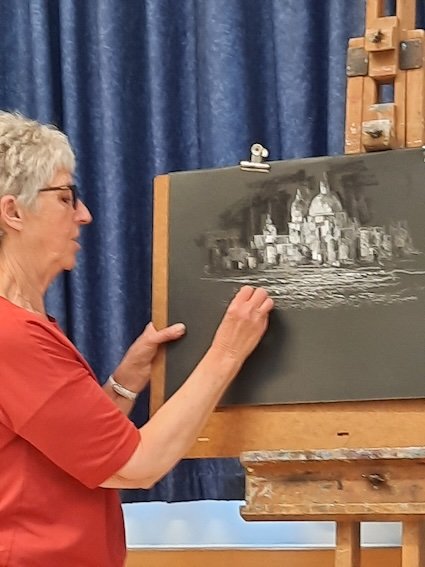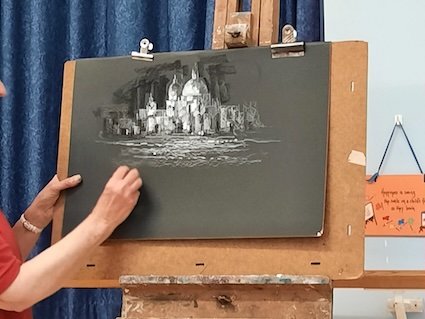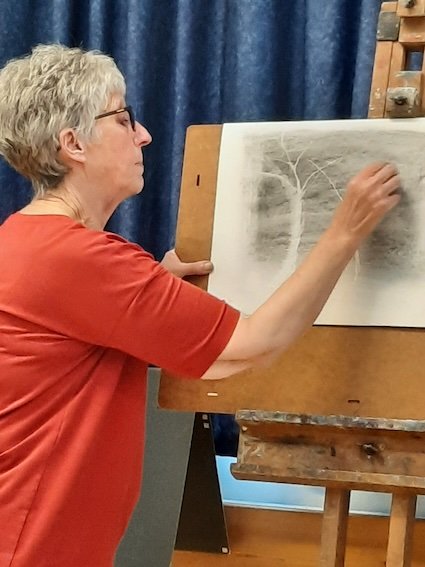Demo: Helen Talbot - Black, White and Shades of Grey
A action packed and very helpful demo from Helen Talbot. She took us back to basics with the reminder that control of tone - your lights and darks - is absolutely essential to the success of any artwork.
She showed us a student work of hers where she had been instructed to mix 20 graduated shades starting from deepest black through greys to brightest white. She then took us through a series of exercises designed to help us practice our perception and control of tone.
Working in white, grey and black mixed media on black mount board. She used a night time photo of Venice as her starting point. Starting with a white waxy pencil (mars lumograph), she started with light strokes, (reminding us to use her square grid technique to help draw an accurate dome), then she blocked in the rest of the landscape. As she added details, she reminded us that controlling the strength of pencil strokes and the approach to shading - the spacing of cross hatching was the key to controlling the subtle range light and dark. Changing to chalks, pastels and conte crayons adjust brightness, she also used a sharpened rubber to enhance detail and charcoal to knock back her light areas.
Working with compressed charcoal on white textured paper, she demonstrated the redaction technique to build up a woodland landscape. As she rubbed the charcoal into the surface of the paper, she reminded us that placing the paper onto a textured surface would add further interest. As we discovered during our reactive drawing workshop, having established a grey/black surface, highlights could be added by using a rubber and working in with more charcoal to pick out details. Helen took this a step further by using pencil to accentuate the darks and chalk to emphasise the lights. She also used a torch stick to blend (though fingers were also useful). She then added more texture by using a scouring pad to dab on some white acrylic.
Working on a used cereal packet to provide the grey surface, she used some Chinese brushwork (loading a Chinese brush with paint, long flicking strokes until the paint runs out) to sketch in some bamboo. She then used white soft pastel to accentuate.
Helen then turned to using collage papers to provide the range of greys and textures (make your own with scrap paper, photocopy text from old books and print it out, photocopy old maps, and so on…). First she sketched in with her waxy black pencil a farmhouse scene from a photo, then she added some shading in various media, and she finished by adding her paper strips. (One useful tip was to roll over the paper with the glue stick once she had stuck it on to make sure it was completely flat.). After this, she adjusted her tones using dry brush white paint and some chalk dust rubbed in.
Helen finished with a woodland scene using watercolours. She added patches of candle wax and layered over her watercolours in greys made from indigo and brown, adding just a little extra colour at this point.
Helen’s workshop will cover all of this ground (and probably more!) on 29th May. Do sign up if you would like to join us.













